|
Food & Nutrition Research Briefs, January 2006
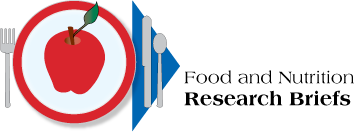
|
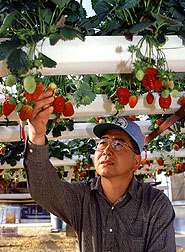
Horticulturist
Fumiomi Takeda, show here in earlier experiments with hydroponically grown
strawberries, has developed strawberry plants for the Mid-Atlantic states that
will bear delicious fruit not only in spring but also in late fall and early
winter.
|
Strawberry lovers in mid-Atlantic states may soon be able to buy baskets
of freshly harvested, locally grown fruit well into December. That's thanks to
an Agricultural Research Service scientist's success in developing a new method
that coaxes June-bearing plants to produce sweet, delicious berries not just in
spring, but in fall through early winter, as well.
The approach requires harvesting small plants called "runner tips" from
mother plants in early July, putting them into small containers, misting them
with water so they will root, then transplanting them to berry fields in early
September, when they are eight-week-old transplants. An article scheduled for
the April 2006 issue of HortScience has more details.
For details, contact:
Fumiomi
Takeda, (304) 725-3451, ext. 212; USDA-ARS
Appalachian
Fruit Research Station, Kearneysville, W.Va.
Back to Contents
|
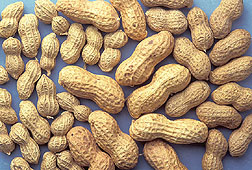
More than a million Americans suffer from peanut
allergies, but ARS researchers are working to reduce the allergenicity. The
U.S. produces about 3 to 4 billion pounds of peanuts annually; 40 percent goes
into processed foods.
|
Apples may hold the key to reducing the allergenicity of peanuts--great
news for the estimated 1.5 million Americans and other folks worldwide who
suffer from peanut allergies.
Agricultural Research Service scientists at the Southern Regional
Research Center, New Orleans, La., discovered that adding a natural compound
from apples--polyphenol oxidase, or PPO--to extracts from chopped-up peanuts
alters the allergenic properties of some peanut proteins.
Plans call for lab-animal studies to confirm the apple protein's
allergen-fighting actions. Other tests will determine PPO's effects on peanut
flavor and shelf life (Journal of the Science of Food and Agriculture,
volume 85, pages 2631 to 2637). The scientists caution that simply eating
apples won't control peanut allergens.
For details, contact:
Si-Yin
Chung, (504) 256-2077; USDA-ARS
Southern
Regional Research Center, c/o Arkansas Children's Nutrition Research
Center, Little Rock, Ark.
Back to Contents
|
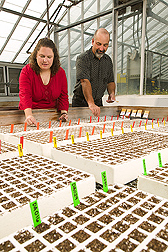
Research associate
Anna Hale and geneticist Mark Farnham plant a broccoli crop.
|
Broccoli seeds may become an economical source of a cancer-fighting
compound known as glucoraphanin. Extracting glucoraphanin from the seed--for
pharmaceutical purposes–would be easier, and less expensive, than using
broccoli heads.
Scientists at ARS' U.S. Vegetable Laboratory, Charleston, S.C., intend
to breed broccoli plants that are prolific producers of seed rich in the
compound (HortScience, volume 40, pages 50 to 53).
Already, the researchers have produced relatively high-glucoraphanin
broccoli plants, some of which form seed without the help of insect
pollinators.
For details, contact:
Mark W.
Farnham, (843) 402-5300, ext. 5327; USDA-ARS
U.S.
Vegetable Laboratory, Charleston, S.C.
Back to Contents
|

Estrogen and exercise help the body use fat in
similar ways.
|
Estrogen, a hormone in both males and females, works in ways similar to
exercise to help the body use fat, a 40-day study with laboratory mice
indicates.
Agricultural Research Service-funded scientists at ARS' Jean Mayer USDA
Human Nutrition Research Center on Aging, Boston, Mass., found that estrogen
replacement in the mice reduced lipids, or fats, by breaking down stored fat;
inhibiting fat storage in liver, muscle and fat tissue; and activating pathways
that promote fat-burning in muscles (Journal of Biological Chemistry,
volume 28, pages 35983 to 35991).
When estrogen was present in liver, muscle and fat cells, expression of
genes that promote fat-burning in muscles was increased.
For details, contact:
Andrew
S. Greenberg, (617) 556-3144; ARS Jean Mayer USDA
Human
Nutrition Research Center on Aging at Tufts University, Boston, Mass.
Back to Contents
|
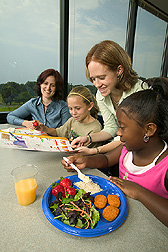
Dietitians
Desiré Stapley (left) and Corey Scarpero use educational materials to
explain nutritional information to students.
|
Chefs in some parts of the United States visit school cafeterias to give
food service pros some ideas for adding pizzaz--and more nutritional value--to
kids' meals. A list of these culinary wizards is among the hundreds of
resources available through the "Healthy School Meals Resource
System."
Nutrition experts with the Agricultural Research Service's National
Agricultural Library, Beltsville, Md., manage the system's comprehensive,
easy-to-use website. Authoritative books, videotapes, CD-ROMs, reports and
studies listed there are available for either downloading or borrowing from a
library through interlibrary loan.
Principals, school nurses, school food service professionals, teachers,
librarians and others should find the site invaluable, especially those who are
developing the "wellness standards" newly required for the nearly 100,000
schools participating in the USDA School Lunch Program.
For details, contact: Desiré Stapley, (301) 504-6366; USDA-ARS
National Agricultural Library,
Beltsville, Md.
Back to Contents
|
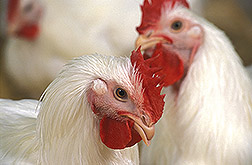
Bacteriocins, proteins,
produced by bacteria, might be used to combat Campylobacter in
chickens.
|
Proteins called bacteriocins, produced by bacteria, can reduce
Campylobacter to very low levels in chicken intestines, possibly helping
to lessen our exposure to this foodborne pathogen.
In a chicken, the bacteriocins produced by Bacillus circulans or
Paenibacillus polymyxa, for example, kill a significant amount of
Campylobacter in the bird's gut (Journal of Food Protection,
volume 68, pages 1450 to 1453).
ARS scientists at the Richard B. Russell Research Center in Athens, Ga.,
and colleagues from the former Soviet Union and elsewhere, have expanded upon
these discoveries by boosting production of bacteriocins. The experiments
yielded quantities suitable for commercial testing as potential replacements
for certain antibiotics.
For details, contact:
Norman
J. Stern, (706) 546-3516; USDA-ARS
Richard
B. Russell Research Center, Athens, Ga.
Back to Contents
|
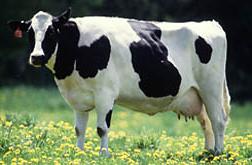
Dairy cow in
pasture.
|
Dairy cows can break down up to 80 percent of perchlorate that they
ingest, according to new research about this chemical (Proceedings of the
National Academy of Sciences, volume 102, pages 16152 to 16157). The
findings suggest that this natural "filtering" process may occur in the rumen,
the second of four compartments in a cow's complex stomach.
Perchlorate--which exists naturally in the environment--has shown up at
very low levels in some milk. In this research, levels in the milk of cows
given various doses of the compound increased slightly as the dosage increased.
But the levels did not rise in direct proportion to the increased dosage,
according to the ARS scientists at Beltsville, Md., who performed the study.
Work by others has already shown that perchlorate does not accumulate in
bovine tissue.
For details, contact:
Anthony
V. Capuco, (301) 504-8672; USDA-ARS
Henry
A. Wallace Beltsville Agricultural Research Center, Beltsville, Md.
Back to Contents
|
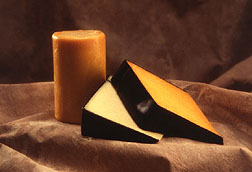
An edible, water-resistant film made with an ARS
process might be used to enhance the quality and shelf-life of cheese and other
foods.
|
Cheese and other dairy-case foods might someday be coated with a thin,
flexible film made from casein, a milk protein. The coating--edible and
water-resistant--could comprise part of the wrapper for cheese or the lining of
cottage cheese or yogurt containers, for instance. That could enhance the
quality of these foods and extend their shelf life.
What's more, flavorings, vitamins or minerals could easily be added to
the coating to increase flavor and nutritional value. That's according to
scientists at ARS' Eastern Regional Research Center in Wyndmoor, Pa., who
developed the film and are seeking a patent for the process to make sheets or
rolls of it (Journal of Agricultural and Food Chemistry, volume 52, page
1190 to 1195).
For details, contact:
Peggy
M. Tomasula, (215) 233-6703; USDA-ARS
Eastern
Regional Research Center, Wyndmoor, Pa.
Back to Contents
|
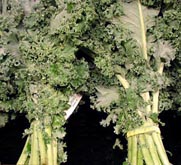
Scientists introduced safe,
stable isotopes to tag the beta-carotene and lutein in kale for a nutrition
study of these carotenoids. Photo courtersy Pioneer Valley Growers
Association, South Deerfield, Mass.
|
Exactly how our bodies use beta-carotene and other carotenoids may now
be easier to determine, thanks to a pioneering method developed by ARS
researchers at the Beltsville (Md.) Human Nutrition Research Center. Scientists
used their technique to introduce safe, trackable stable isotopes to two kinds
of carotenoids in green, leafy kale plants grown for the research.
Both carotenoids act as antioxidants, protecting cells and tissues from
damage caused by naturally occurring molecules called oxygen free radicals.
A preliminary study with seven adult volunteers who ate the
specially-tagged kale revealed that absorption, in the intestine, of
beta-carotene is related to absorption of lutein, and that the intestine is
better at absorbing lutein than beta-carotene (Journal of Lipid
Research, volume 46, pages 1896 to 1903).
In addition, the research is revealing more clues about how our bodies
convert beta-carotene into vitamin A.
For details, contact:
Beverly
A. Clevidence, (301) 504--8367; USDA-ARS
Beltsville
Human Nutrition Research Center, Beltsville, Md.
Back to Contents
|
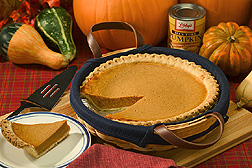
Pumpkin pie is loaded with a
healthful phytonutrient called beta-carotene.
|
Pumpkin for making into a delicious pie or hearty soup, for instance, is
rich in healthful beta-carotene. Now food processors and plant breeders can
benefit from a new technique to accurately determine the amount of beneficial
carotenoids in pumpkins--and other squashes (Journal of Chromatography
A, volume 1073, pages 371 to 375).
The simple and environmentally friendly carotenoid assay relies on two
well-established techniques--supercritical fluid extraction and reversed-phase
liquid chromatography--to provide rapid, reliable and reproducible results.
Scientists at the ARS Western Human Nutrition Research Center, Davis,
Calif., developed the test.
For details, contact:
Betty J.
Burri, (530) 752-4748; USDA-ARS
Western
Human Nutrition Research Center, Davis, Calif.
Back to Contents
|
The U.S. Department of
Agriculture (USDA) prohibits discrimination in all its programs and activities
on the basis of race, color, national origin, age, disability, and where
applicable, sex, marital status, familial status, parental status, religion,
sexual orientation, genetic information, political beliefs, reprisal, or
because all or part of an individual's income is derived from any public
assistance program. (Not all prohibited bases apply to all programs.) Persons
with disabilities who require alternative means for communication of program
information (Braille, large print, audiotape, etc.) should contact USDA's
TARGET Center at (202) 720-2600 (voice and TDD). To file a complaint of
discrimination, write to USDA, Director, Office of Civil Rights, 1400
Independence Avenue, S.W., Washington, D.C. 20250-9410, or call (800) 795-3272
(voice) or (202) 720-6382 (TDD). USDA is an equal opportunity provider and
employer.
|
|
|
|